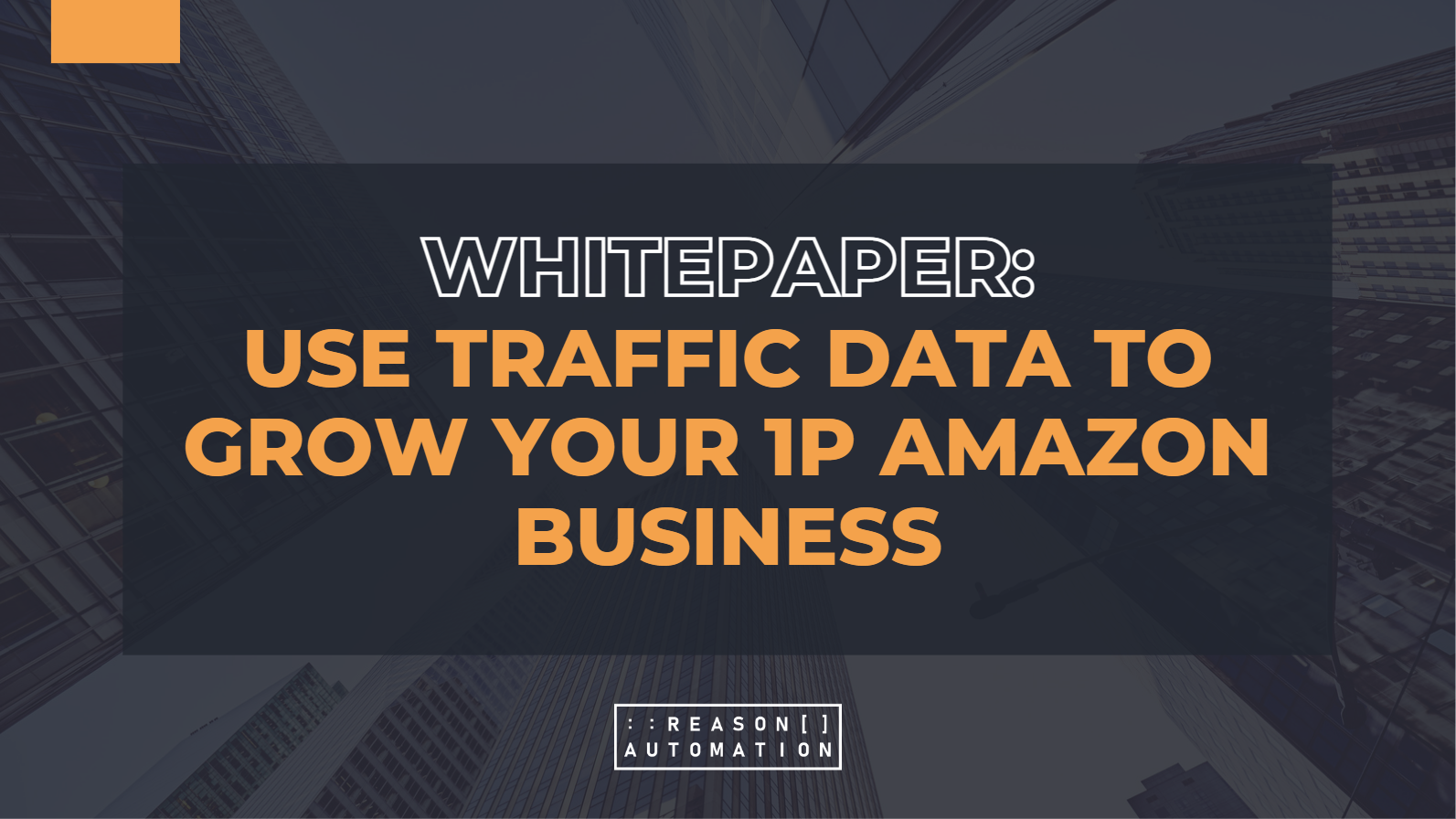How to Increase Glance Views on Amazon
When it comes to ecommerce, gaining visibility for your products is critical to the bottom line. For Amazon vendors, that means racking up as many “glance views” as possible on their product pages. But glance views are not the same as pageviews, and boosting them can be tricky.
In this guide, we’ll talk about some of the best methods for increasing glance views on product pages and how vendors should approach glance views data. But first, you’ll need to understand where to find your glance views data, and whether your conversion rate indicates you should seek more glance views or focus on converting the ones you have.
Where to Find Glance Views Data in Amazon Vendor Central
You can find glance views data by logging into Vendor Central and going to Reports > Retail Analytics > Traffic. Glance view details can be found within the Traffic report. Keep in mind that these are limited snapshots for one product and should not be viewed in isolation. We’ll discuss that more later.
For a more detailed breakdown of what glance views are and how to understand them, see our guide: "Amazon Glance Views: About Vendor Central Traffic & Conversion Data"
What Is a Good Glance View Conversion Rate?
A 10% conversion rate on glance views is generally considered a good benchmark on Amazon, but it will heavily depend on the product or product category. For example, low-priced consumable products like cereal typically have higher conversion rates than high-priced durable products like LCD TVs.
In any event, if you feel your conversion rate is lagging, you might want to focus on that first. After all, it does no good to drive traffic to your products if these customers won’t buy, either. But if you are happy with your conversion rate, you should start looking for methods to get more customers in the door.
What Are the Main Methods for Increasing Glance Views?
Levers for increasing glance views are a bit obscure and challenging. However, there are four that may provide you with the best chance of giving your glance views a boost.
Sponsored Ads
This is the easiest lever to use, although the obvious problem is that it costs money. Vendors can experiment with different ads and better targeting to increase the return on investment for every dollar they spend on ads.
A Vendor’s Website
Another option is to use your own website to drive traffic to your products. Many brands have a link to their Amazon detail page from their own website when they highlight their products, because they don’t have direct consumer fulfillment operations. Instead, they point customers directly to the listing on Amazon so they can buy it there.
If you have a website but aren’t using it to point it to your products, this could be an option. You could draw traffic to your site through content marketing campaigns targeted at your customers, and then use that content to highlight your products on Amazon.
Social Media
If you have an active social media account with a strong following, you can use it to promote product listings on Amazon and link directly to product listings. Also, paid social media can be a good way to boost traffic even if you don’t have a large organic audience – just be sure to track and test different types of messaging to ensure you’re getting the most for your money.
You can also experiment with Amazon Attribution, an advertising and analytics measurement tool offered by Amazon that can give you insight into how non-Amazon marketing channels -- like social media -- are performing within Amazon itself.
Amazon Search Ranking
Having a strong search ranking within Amazon is important because most customers will search from products using Amazon’s search engine, and if you rank highly in the results, customers are more likely to check out your product, causing a surge in glance views in the process. As a result, improving your organic search rank on Amazon is a good way to boost glance views.
Amazon doesn’t reveal all of the factors that go into search ranking, but there are a few likely factors you should focus on:
Inventory: The second you go out of stock, Amazon pushes you down in the rankings. Amazon doesn’t like to tell customers that they can’t order a product because it isn’t available, so they will push up vendors that consistently deliver and push down vendors who go out of stock.
Sales volume: Vendors who sell a lot of a certain type of product are more likely to rank higher in the results.
Meta data: How easy is it for Amazon’s search engine to identify your product? The more specific information you provide about the product’s specs in the title and product description, the more likely you are to get a favorable position.
Ratings and reviews: Poorly rated and reviewed products will not fare as well in search rankings, even if you keep products in stock and have strong product detail pages.
Does Traffic Data Like Glance Views Matter As Much to Vendors as Sellers?
This is a somewhat complicated question because the way that Amazon measures traffic is different for sellers and vendors.
For example, a glance view is specific to vendors, whereas sellers go by pageviews. A glance view is if a customer is on the detail page when you are winning the Buy Box as the vendor, and so it is not a measure of total traffic to the detail page. As a result, it’s not clear if traffic in the form of glance views is the total opportunity or just some fraction of the opportunity. Sellers, on the other hand, can use pageviews to measure total traffic to the page.
This creates challenges for vendors, who must make assumptions about their traffic. Are the glance views a true measure of traffic to their product detail pages, or should they factor in, say, 50% more for other traffic? That affects the conversion rate and other analytics.
How Vendors Can Use Traffic Data to Grow Their Business
Another big problem vendors face is that while they can easily access glance views data in Vendor Central, these traffic reports are just a brief snapshot of data for one product – not a spreadsheet of all products from all dates. As a result, brands often have to manually download dozens of reports and compile them into a spreadsheet to conduct detailed analysis of the data.
Also, much of this traffic data is useless without comparing them to sales and inventory reports – which also must be manually downloaded. Finally, Amazon cleans up the data on a regular basis, which means data you downloaded a week ago may not be the same today.
All of this creates a frustrating experience for vendors. To help them, we've put together a free whitepaper on how to access this data and turn it into actionable results that allow vendors to grow their businesses. The whitepaper, “Use Traffic Data to Grow Your 1P Amazon Business,” is available for download below.
Read More:
Use Traffic Data to Grow Your 1P Amazon Business
This whitepaper offers a much more detailed discussion of Amazon traffic data. We created it for Amazon vendors who want to grow their business by making sound business decisions through key insights derived from traffic data. It includes everything you need to know about what glance views are, where to find this data, what insights you can gain by combining it with other VC reports, and what options are available if you don’t have time for manual data-gathering.
Download the free whitepaper:


